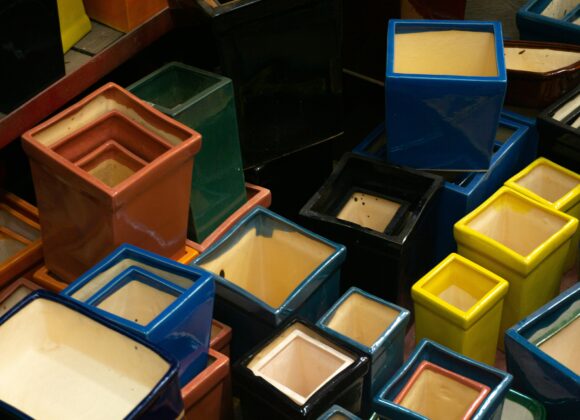Merino wool has earned its reputation as a premium fabric for outdoor gear, travel clothing, and everyday wear. Its natural softness, breathability, and odor resistance make it a go-to for those who value comfort and performance. But despite its many advantages, merino wool isn’t for everyone. Whether due to cost, ethical concerns, allergies, or durability issues, many people are searching for a merino wool alternative that delivers similar benefits—without the drawbacks.
In this comprehensive guide, we’ll explore the best alternatives to merino wool, comparing their properties, use cases, and sustainability profiles. Whether you’re building a travel capsule wardrobe, gearing up for a hike, or simply looking for cozy everyday wear, there’s a perfect fabric waiting to meet your needs.
🌟 Why People Love Merino Wool—and Why They Look for Alternatives
Before diving into alternatives, it’s worth understanding why merino wool is so beloved—and what drives people to seek substitutes.
✅ Merino Wool Benefits
- Temperature Regulation: Keeps you warm in cold weather and cool in heat.
- Moisture-Wicking: Pulls sweat away from the skin, keeping you dry.
- Odor Resistance: Naturally antimicrobial, reducing the need for frequent washing.
- Softness: Finer fibers make it less itchy than traditional wool.
- Biodegradability: As a natural fiber, it breaks down over time.
❌ Common Drawbacks
- Cost: High-quality merino wool garments can be expensive.
- Durability: Prone to pilling and wear over time.
- Ethical Concerns: Animal welfare issues, such as mulesing, raise concerns for some consumers.
- Allergies/Sensitivity: Even fine wool can irritate sensitive skin.
- Care Requirements: Often requires hand washing or delicate cycles.
For those who love the performance of merino but want a more affordable, ethical, or durable option, the search for a merino wool alternative is both practical and personal.
🧶 Top Merino Wool Alternatives: Natural, Synthetic, and Blended Options
Let’s explore the most popular and effective alternatives to merino wool, each with its own strengths and ideal use cases.
1. Tencel (Lyocell)
Tencel is a semi-synthetic fiber made from sustainably harvested wood pulp, typically eucalyptus. It’s known for its silky texture and excellent moisture management.
- Pros:
- Exceptionally soft and smooth
- Breathable and moisture-wicking
- Biodegradable and eco-friendly
- Resistant to wrinkles and shrinkage
- Cons:
- Less insulating than wool
- May be less durable in rugged conditions
Best for: Travel clothing, base layers, and casual wear Why it’s a great merino wool alternative: Tencel offers similar breathability and softness, with a more sustainable and vegan-friendly profile.
2. Modal
Modal is another semi-synthetic fiber derived from beech tree pulp. It’s prized for its luxurious feel and drape.
- Pros:
- Ultra-soft and lightweight
- Breathable and absorbent
- Resistant to fading and shrinking
- Cons:
- Less odor-resistant than wool
- May retain moisture longer
Best for: Everyday wear, sleepwear, and layering Why it’s a great merino wool alternative: Modal mimics the comfort of merino without the itch or ethical concerns.
3. Bamboo Viscose
Bamboo fabric is made from the pulp of bamboo plants, processed into viscose or rayon. It’s naturally antibacterial and hypoallergenic.
- Pros:
- Soft and breathable
- Moisture-wicking and odor-resistant
- Sustainable and renewable
- Cons:
- Chemical processing raises environmental concerns
- Can be less durable than wool
Best for: Undergarments, socks, and summer wear Why it’s a great merino wool alternative: Bamboo offers comfort and performance, especially for sensitive skin.
4. Hemp
Hemp is one of the oldest and most sustainable fibers used in textiles. It’s strong, breathable, and naturally antimicrobial.
- Pros:
- Durable and long-lasting
- Breathable and insulating
- UV-resistant and antibacterial
- Cons:
- Coarser texture (often blended for softness)
- Limited availability in performance wear
Best for: Outdoor clothing, casual wear, and eco-conscious fashion Why it’s a great merino wool alternative: Hemp’s ruggedness and sustainability make it ideal for active lifestyles.
5. Alpaca Wool
Alpaca fiber comes from the alpaca animal, native to South America. It’s warmer and softer than merino, with no lanolin (a common allergen).
- Pros:
- Hypoallergenic and itch-free
- Lightweight and insulating
- Water-resistant and breathable
- Cons:
- Higher cost
- Limited availability in technical garments
Best for: Cold-weather gear, sweaters, scarves Why it’s a great merino wool alternative: Alpaca offers superior warmth and softness, especially for winter wear.
6. Recycled Polyester and Nylon
Modern synthetics are engineered for performance and sustainability. Recycled versions reduce environmental impact.
- Pros:
- Quick-drying and moisture-wicking
- Lightweight and durable
- Affordable and widely available
- Cons:
- Less breathable than natural fibers
- Can retain odors over time
Best for: Sportswear, travel gear, and base layers Why it’s a great merino wool alternative: Synthetics offer technical performance at a lower cost, especially for active use.
7. Soy Protein Fiber
Soy fabric is made from the byproducts of soybean processing. It’s often called “vegetable cashmere” due to its softness.
- Pros:
- Silky and smooth texture
- Biodegradable and sustainable
- Good moisture management
- Cons:
- Less durable than wool
- Limited availability
Best for: Loungewear, sleepwear, and light layering Why it’s a great merino wool alternative: Soy fiber offers a vegan-friendly option with luxurious comfort.
📊 Comparison Table: Merino Wool vs. Its Alternatives
| Fabric | Softness | Breathability | Odor Resistance | Sustainability | Durability | Price Range |
|---|---|---|---|---|---|---|
| Merino Wool | High | High | High | Moderate | Moderate | $$$ |
| Tencel | High | High | Moderate | Excellent | Moderate | $$ |
| Modal | Very High | High | Low | Good | Moderate | $$ |
| Bamboo Viscose | High | High | High | Good | Moderate | $$ |
| Hemp | Moderate | High | High | Excellent | High | $ |
| Alpaca | Very High | High | High | Moderate | High | $$$ |
| Recycled Polyester | Moderate | Moderate | Low | Good | High | $ |
| Soy Fiber | High | Moderate | Moderate | Excellent | Low | $$ |
🌍 Sustainability Spotlight: Choosing Eco-Friendly Fabrics
If environmental impact is a key concern, some merino wool alternatives stand out:
- Tencel: Produced in a closed-loop system with minimal waste.
- Hemp: Requires little water and no pesticides.
- Soy Fiber: Utilizes agricultural waste.
- Recycled Synthetics: Reduce landfill waste and carbon footprint.
Merino wool itself is biodegradable, but concerns around animal welfare and land use make plant-based and recycled options attractive for eco-conscious consumers.
🧥 Use Case Scenarios: Matching Fabric to Function
Let’s match each alternative to specific lifestyle needs:
🏕 Outdoor Adventures
- Best Choice: Hemp or recycled synthetics
- Why: Durable, breathable, and moisture-wicking
✈️ Travel Capsule Wardrobe
- Best Choice: Tencel or bamboo
- Why: Lightweight, wrinkle-resistant, and odor-resistant
🧘♀️ Everyday Comfort
- Best Choice: Modal or soy fiber
- Why: Soft, breathable, and gentle on skin
❄️ Cold Weather
- Best Choice: Alpaca
- Why: Superior insulation and softness
🧼 Easy Care
- Best Choice: Recycled polyester
- Why: Machine washable and quick-drying
🧺 Care Tips for Merino Wool Alternatives
Each fabric has its own care requirements. Here’s how to keep them looking and feeling great:
- Tencel/Modal: Wash cold, gentle cycle, hang dry.
- Bamboo: Avoid high heat; wash with mild detergent.
- Hemp: Machine washable; softens




